All S’pore employers must consider formal requests for flexi-work from Dec 1 under new rules

From Dec 1, 2024, all employers in Singapore must fairly consider formal requests from employees for flexible work arrangements (FWAs) under the new Tripartite Guidelines on Flexible Work Arrangement Requests.
In an announcement on the Ministry of Manpower (MOM) website today (April 16), it stated that the Singaporean government has accepted all 10 recommendations presented by the tripartite workgroup.
The compulsory guidelines were first unveiled yesterday (April 15) during a company visit to the Ridout Tea Garden outlet of fast-food chain McDonald’s attended by the three co-chairs of the tripartite workgroup that had worked on them since September 2023.
The co-chairs are Minister of State for Manpower Gan Siow Huang, Singapore National Employers Federation honorary secretary Edwin Ng, and Ms Yeo Wan Ling, assistant secretary-general of the National Trades Union Congress.
The objectives of the new guidelines
In a media briefing held earlier in April, the workgroup shared that the guidelines will focus on formal requests for FWAs and the processes to submit and evaluate them.
However, they have clarified that the rules will not govern the outcome.
The guidelines stated that FWAs are defined as work arrangements that vary from the standard work mode, consented to by both the employer and employee, which may fall into three categories:
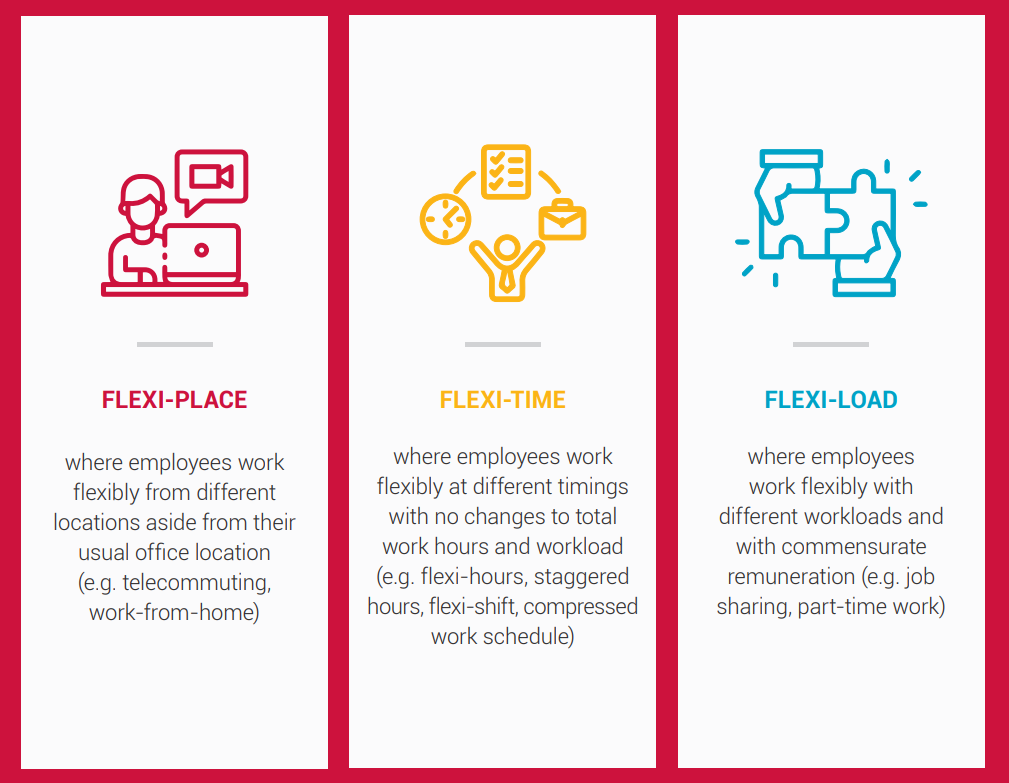
With the release of the new guidelines, the workgroup aims to sensitise employers, particularly small and medium-sized enterprises (SMEs) with less advanced human resource processes, to consider flexi-time and flexi-load arrangements too.
“It must be the employers’ prerogative to decide if (an) FWA for a particular job is viable from a business point of view. That is a key principle that all tripartite partners subscribe to,” the workgroup said at a briefing on April 4.
It added that the administrative burden is kept light to ensure all firms can comply.
How will it work?
The guidelines will apply to all employees who have served their probation and only cover formal requests.
The workgroup explained that formal requests often take the form of structured, recurring arrangements that entail some change in work processes.
On the other hand, non-formal requests for FWAs do not fall under these guidelines, but they should be allowed to be raised and approved or rejected so long as there is a consensus.
If you look at existing practices, you will find that, especially when it’s very ad hoc, an employee may go to his supervisors (to ask) “Can I come in a bit later today, because I need to just settle some things for my children or for my mother?”, and it works.
What we don’t want to do is to then artificially add on a cumbersome as well as heavy administrative process, and so the formal arrangement is if the employee wants something a little bit more long-term.
The Tripartite Workgroup, as stated in an article by The Straits Times
The guidelines stipulate that the process to submit a formal request and how the request will be handled should be clearly outlined to workers.
Employees will need to make their formal FWA requests in writing and follow requirements implemented by their employers.
In the case where no requirements were stipulated, the guidelines urge employees to mention the following details by default:
- Date of request
- Type of FWA
- Duration
- Reason
- Start and End dates
Following that, employers must respond to the request within two months from the date the request was made. This allows employers ample time to consider the alternative arrangements needed should the request be approved, evaluate their feasibility, and subsequently implement them.
These could include checking how the workload and job hours of the requester’s colleagues may need to be changed, for instance.
The workgroup also noted that two months is the norm stipulated in UK legislation allowing for the right to request FWAs.
Workers will also be free to provide any reason for an FWA request and are not limited to caregiving responsibilities.
What happens if your requests are rejected?
If the arrangement sought is not feasible, a reason must be given by the employer.
The workgroup shared that the reason for rejection should be business-related, such as cost or feasibility, and they should not reject based on other non-business-related factors, including not believing in FWAs.
Responding to media queries during their company visit on April 15 on further actions taken on employers who offhandedly reject FWA requests, Minister Gan added that market forces would mean employers have an interest in complying.
“We know that we have a tight labour market in Singapore, and the employers themselves actually know that if they want to attract talent to join them or retain the good people in the company, they have to be competitive and progressive,” she said.
Here are the steps that employees can take when they have their requests rejected:
- Discuss and resolve disagreements on FWAs through the company’s internal grievance handling protocols.
- Approach unions for advice on formal/non-formal FWA requests
- If your employer does not follow the guidelines, seek assistance from the Tripartite Alliance for Fair and Progressive Employment Practices (Tafep).
The workgroup added that Tafep will engage the employers and advise them to comply with the guidelines.
The Ministry of Manpower (MOM) has said that the guidelines will set out best practices for developing trust and mutual understanding between employers and employees.
This is a more effective approach in developing strong workplace norms around FWAs, compared with a punitive one.
In cases where employers are recalcitrant and/or wilfully refuse to comply with the (guidelines), MOM may issue a warning and require them to attend corrective workshops
The Ministry of Manpower (MOM)’s response to queries from The Straits Times
The workgroup said Tafep and the Institute for Human Resource Professionals will introduce training and resources to help employers gain the capabilities to implement FWAs effectively.
These resources will be progressively rolled out from May 2024. Employers can visit the Tafep website to access these resources, sign up for training sessions and make inquiries.
Earlier this month (April 9), NTUC released a briefing paper to showcase unionised companies and labour movement partners that have benefited from putting FWAs in place, as well as strategies for implementing FWAs.
“All job types in all industries, with creativity, will be able (to be) re-engineered such that it creates a trust culture for workers as well as employers when it comes to the introduction of flexible working arrangements,” said Yeo to reporters on April 15. Yeo is also the director of NTUC’s U SME and U Women and Family units.
Featured Image Credit: Adobe Stock
Also Read: Hiring, AI, remote work: Industry leaders share how to navigate the job market jungle
Kay’s Steak & Lobster’s founder almost quit 3 yrs in, now his halal chain makes 8 figures/yr

For Aizuddin, the co-founder and managing director of Kay’s Steak & Lobster (Kay’s), becoming an F&B entrepreneur was a deceptively simple decision.
With a background in the banking and finance industry, he didn’t have any grand inspirations or motivations to start the business.
“The main driving force was my desire to escape the daily grind of commuting through traffic jams,” he admitted candidly.
Living in Putra Heights and working in KL, he found the daily commute to be a major hassle. So, in 2014, he decided to open a restaurant close to home so as to not deal with traffic.
But why a restaurant?

“Well, my first thought was, how hard can it be to run a restaurant?” Aizuddin replied. “You just cook, serve, and collect cash from customers. Everyone needs to eat at least three times a day, so you have three opportunities in a day that customers will come and buy from you.”
Little did he know how hard it would be to run and sustain a restaurant business. In hindsight, the entrepreneur said he wouldn’t even have considered it in the first place had he known what he knows now.
From 2014 to 2017, the business only managed to break even. Aizuddin began having second thoughts, wondering whether the effort the team put in was even worth it.
“I wondered if we should just close it down and go back to the corporate world,” he admitted.
But thankfully, the entrepreneur persevered.
In 2017, Aizuddin renamed his business to Kay’s Steak & Lobster, better highlighting their core offerings. He conducted a thorough review of their costs, implemented menu engineering strategies, and repriced their menu. He also renegotiated payment terms with suppliers, securing credit terms ranging from seven to 30 days.
“This has provided us with additional cash flow to allocate towards our marketing initiatives,” he explained.

With amped up marketing efforts, they were able to enhance their brand visibility and attract a wider audience, while also introducing a loyalty programme to retain those customers.
Thanks to these strategies, Aizuddin now celebrates a decade in the F&B industry.
“While my journey began out of a simple need for convenience, it’s been a rewarding experience evolving the restaurant into what it is today.”
Building a healthy business
From one restaurant in 2014, Kay’s has since expanded to three outlets in total.
While the quantity of outlets increased, the team has also been maintaining and even improving their quality. Aizuddin shared that a major shift in the business has been towards establishing standardised operating procedures (SOPs) to facilitate their expansion.
This approach revolves around three key pillars: people, process, and technology.
“Firstly, we prioritised hiring individuals who not only possessed the right skills for their roles but also shared our vision and were committed to achieving it alongside us,” he said.
To attract the right talent, Aizuddin said they make sure to communicate the company’s vision and culture clearly during the hiring process. Other strategies include tapping into personal and professional networks for quality referrals.

Promising room for growth is also critical. “We positioned our company as a place where employees could not only use their skills but also learn and advance within the company,” he said.
Fostering this growth, the company offers many upskilling and training opportunities.
Given the support that Kay’s offers to its employees, isn’t there a concern that they would leave for greener pastures, or to start their own ventures?
“We believe in supporting our employees’ career aspirations,” Aizuddin said to that. “If a chef decides to pursue entrepreneurship, we encourage and facilitate their journey.”
He added, “Should they choose to start their own venture, provided it aligns with our values and regulations, we may even consider investing in their business to support their growth and success.”

Aside from talent attraction and retention, the team also consistently re-evaluates their processes, identifying areas for enhancement and streamlining.
To support this, the team has established four functional departments crucial for business success—HR, Finance, Operations, and Marketing. Each are led by capable individuals with clear objectives that align with the company’s overarching vision, Aizuddin said.
The co-founder has also made significant investments in digital solutions and tools. This includes digitising HR functions, implementing a reservation and loyalty system, and integrating high-tech kitchen equipment to enhance product delivery speed and consistency.
Offering halal assurance
In addition to quality ingredients, Aizuddin believes Kay’s stands out thanks to its prioritisation of the halal certification.
“Central to our mission is our aspiration to become the foremost halal fine casual dining establishment in every region where we operate,” he said. “To realise this goal, we embarked on the journey of obtaining halal certification from JAKIM.”
In September 2023, the company achieved the milestone of receiving halal certification for all its outlets.
But beyond just catering to the needs of Muslim consumers, which is the majority of their customer base, the halal certification process and its rigorous protocols also ensure food safety and ingredient traceability. This all in all ensures the restaurant upholds strict standards.
Growing an empire
Aizuddin shared that he had launched Kay’s with a modest capital of less than RM200,000 back in 2014. The majority was allocated for setting up the initial version of Kay’s, covering everything from equipment to initial inventory. The remaining funds were designated for working capital to sustain day-to-day operations.
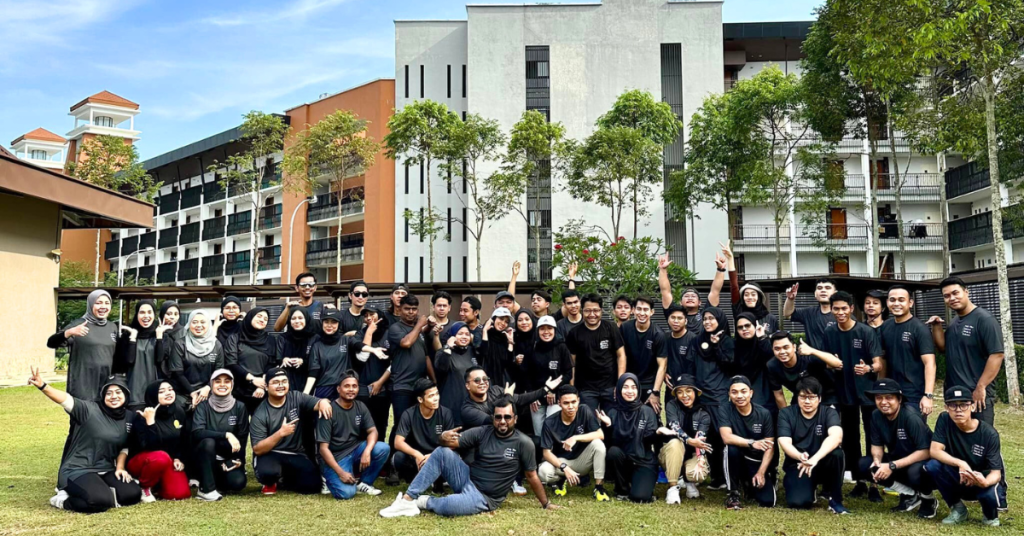
“This initial capital infusion was primarily self-funded, drawn from my personal savings and contributions from my wife,” he revealed. He added that his wife, who is now the Director of Marketing and Operations at Kay’s, also plays a big part in keeping day-to-day operations running smoothly.
Support also came from his parents and siblings, who became shareholders in the company.
As the business grew, it relied heavily on bootstrapping. Profits were consistently reinvested to fuel growth and expansion.
In the latest audited financial statements from 2022, the business was raking in eight-figure revenue, and healthy seven-figure profits.
This will go towards propelling Kay’s growth, starting with strategic expansion within the Klang Valley as well as venturing into new territories. Specifically, the team aims to open two new outlets in the Klang Valley, with one already under construction in Elmina and another planned for the KLGCC area in 2025.
As for markets outside the Klang Valley, they already have planned outlets in Johor Bahru and Penang.
“To support the growth of these outlets, we’re investing in the establishment of a central kitchen,” Aizuddin added. A central kitchen will ensure consistent quality across all locations as they scale.

Additionally, the co-founder is also exploring opportunities to diversify the company’s market presence. This could involve entering new market segments through acquisitions or even developing new brands.
“Looking towards the long term, our vision for Kay’s is to become a leading halal multi-brand F&B company with a strong presence both locally and internationally,” he shared his ambitions.
This won’t be easy, and the co-founder recognises that. It will take sustained growth, continued innovation, and strategic expansion into new markets, all while upholding the brand’s core values.
However, Aizuddin is confident and determined. “Through diligent execution of our plans and a focus on delivering exceptional experiences, we aim to position Kay’s as a prominent player in the F&B industry.”
- Learn more about Kay’s Steak & Lobster here.
- Read other articles we’ve written about F&B businesses here.
Also Read: Why M’sians need to join this 2-day event in PJ that’ll boost your understanding of IPs
Featured Image Credit: Kay’s Steak & Lobster
Xiaomi 14 Ultra’s new photography kit addition makes it feel like a compact camera, so what?

In an era where the line between phones and traditional cameras blurs, the quest for the perfect shot persists for photography nerds who demand more from their device’s camera capabilities.
There’s a reason why traditional cameras, particularly those with specific dimensions and forms, are still in demand: nothing compares to the tactile feel of genuine buttons, dials, and strong grips.
These are features that most phones lack, however, the Xiaomi 14 Ultra is an exception.
Unlocking the photographer’s arsenal
What truly makes this phone a camera is the optional accessory bundle for Xiaomi’s flagship, the Xiaomi 14 Ultra photography kit.
It consists of a few parts: a leather phone case, a 67mm filter adapter ring, a couple of decorative non-functional replacement rings, a wrist strap, and most importantly a camera grip with a shutter and video buttons.
It has a female USB-C port of its own for passthrough charging, and it plugs into the Xiaomi 14 Ultra’s bottom via USB-C.
To fully charge the 14 Ultra, the grip also has a 1,500mAh battery.
When the grip is fastened and locked, the Xiaomi 14 Ultra genuinely has the sensation of an exceptionally thin point-and-shoot camera.
The grip protrudes just far enough for your fingers to have a firm one-handed hold without being so large that it becomes difficult to fit in your pocket. The bottom edge fits comfortably in the palm of your hand.
And everything on the grip is super handy.

What’s the grip all about
On the top of the grip, there’s a two-stage shutter button with a zoom lever surrounding it, a dedicated video button, and a programmable dial. By default, the dial is set to exposure compensation.
I really enjoy that I can adjust the brightness of an image without having to touch the screen. Not just manual, but also the standard camera shooting mode is compatible with this.
The only thing I have to complain about is how simple it is to bump it and accidentally adjust the zoom lever without realising it.
The video button is equally useful as it is designated for functions such as focus peaking or white balance settings.

The dial can also be used to alter the standard camera characteristics, including aperture control, as the main camera of the 14 Ultra contains a variable f/1.6-4 lens.
Besides, switching to video recording doesn’t require me to glance at the screen as I can just click the shutter button.
Every one of these input methods is customisable. Most importantly, you can programme the zoom rocker to move between lenses sequentially instead of utilising continuous digital zoom between lenses.
The shutter button also works really well. As with a normal camera, you may half-press it to trigger autofocus, which highlights the subject in the viewfinder by bringing up phase-detection points. Holding down the half-press button allows you to capture many shots with the same focus fixed in, which is very helpful when taking pictures of people.
Finally, even with the phone locked, pressing the shutter button provides a convenient method to open the camera app straight away.
Next-level upgrades
Based on my research, Xiaomi released a similar photography kit for the 13 Ultra last year, but the 14 Ultra version makes a few significant improvements over that model.
The 13 Ultra model requires a second 330mAh battery for charging and can be operated only with a Bluetooth connection.
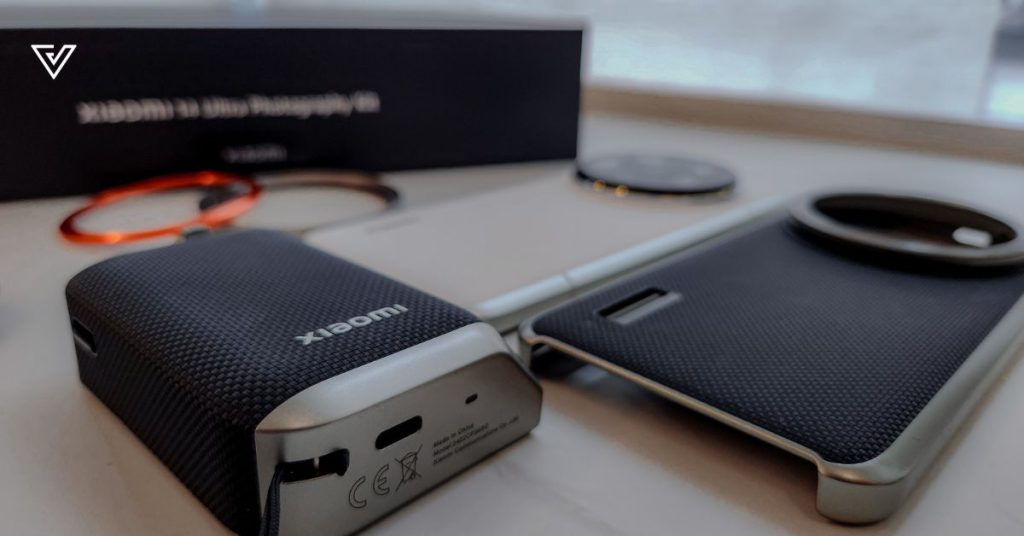
However, the 14 Ultra kit now offers a more reliable and responsive connection with the USB-C switch. Even when the phone runs out of battery, it can also be charged simultaneously with the phone.
On the other hand, the larger internal battery has the ability to charge the phone in the reverse direction, which can significantly impact how long it lasts on days when you shoot a lot.
The only drawback is the battery does add a little weight, and it’s enough to notice the difference when you have the phone balanced in one hand with the grip.
Leica lens magic
The Xiaomi 14 Ultra, which was co-developed with the well-known German camera company Leica, is said to be jam-packed with cutting-edge optics, a flexible camera setup, the greatest hardware available, intricate computational photography software, and illustrious Leica colour profiles.
It uses a 1-inch-type main camera sensor and is one of the largest sensors available for a smartphone.
The phone’s rear has a quad-camera system with a 50MP resolution that includes an ultra-wide angle, a wide angle, a telephoto, and a periscope camera.

The main highlight is that the camera builds on the dual aperture architecture of the 13 Ultra by offering an f/1.63-f/4 step-less variable aperture.
The majority of phone cameras that you have ever used have a fixed aperture; very few have ever had multiple aperture settings. To capture more light, you would have to choose the widest fixed aperture setting possible as most of the phone cameras have tiny sensors and lenses.
As mentioned, the Xiaomi 14 Ultra is not like most phone cameras. This is because the 1-inch sensor format is large enough, and having the option to stop down to a lower aperture is useful in a few ways.
After about a week of shooting with the 14 Ultra, I still feel like I’m only beginning to explore all that this camera is capable of.


Thus far, the image quality is pretty impressive.
The only downside is that the segmentation in portrait mode lacks the sophistication of a Samsung phone.
Despite the large size of the 14 Ultra’s camera sensor, if your subject is closer than a foot away and you want an extremely soft backdrop, you’ll still need to use portrait mode. While it’s not the greatest in the game, it’s undoubtedly a decent portrait mode.

Verdict
Overall, the Xiaomi 14 Ultra is still good as a daily driver, too, with stellar performance from the Snapdragon 8 Gen 3 chip, a glorious display, and good enough battery life.
At the moment, many online reviews are comparing the Xiaomi 14 Ultra to Samsung’s Galaxy Ultra S24. Much of this has to do with both cameras’ specifications being quite similar.
When it comes to pricing, Xiaomi seems to beat Samsung with the Xiaomi 14 Ultra’s starting price at RM5,199 (16GB + 512GB). However, the optional photography kit costs an additional RM799.
| Xiaomi 14 Ultra | |
| Memory & Storage | 16GB + 512GB |
| Display | 6.73″ AMOLED display |
| Battery | 5,000mAh internal battery, which supports 90W HyperCharge, claimed to be 100% in 33 minutes |
| Weight | 219.8g |
| Colour Variants | Black & White |
To be clear, I do not believe that phones should or can take the role of traditional cameras.
Regardless, I’m glad to see a phone manufacturer learning from the successful conventional camera industry.
I personally think the Xiaomi 14 Ultra Photography Kit will be a game-changer for photography enthusiasts like me who rank a smartphone’s camera as one of the most important considerations when making a purchase.
| Pros | Cons |
|---|---|
| Great camera system | Battery life below average |
| Impressive image quality and vibrant display | Portrait mode lacks sophistication |
| Unique camera grip transforms it into a compact camera | Expensive, camera grip is a pricey extra |
- Learn more about Xiaomi 14 Ultra Photography Kit here.
- Read other articles we’ve written about Xiaomi here.
VP Verdict is a series where we personally try and test out products, services, fads, and apps. Want to suggest something else for us to try? Leave a comment here or send the suggestion to our Facebook page.
Also Read: Employees need a Copilot to boost productivity & ease brain drain. This webinar shows how.
Guru-guru di pusat Bahasa Cina ini 100% bumiputera untuk bantu anak Melayu lain maju kerjaya

Nota: Temu bual ini diadakan dalam Bahasa Inggeris, jadi sebarang petikan langsung telah diterjemahkan ke Bahasa Melayu.
Dibesarkan di Kelantan, Shah Farid Rashid merupakan seorang pelajar yang cerdas dan bercita-cita tinggi untuk mendaftar di MRSM demi melanjutkan pelajaran ke luar negara.
Berkat kerja kerasnya, dia dapat mencapai ini, tetapi ada satu perkara yang pada asalnya tidak dia jangkakan perlu belajar: Mandarin.
“Berasal dari latar belakang yang kurang berkemampuan, saya tidak mempunyai banyak pilihan sejak kecil. Justeru, saya sentiasa perlu mencari keseronokan dalam apa jua pilihan yang saya ada,” Shah berkata.
“Jadi selepas SPM dab sementara kebanyakan rakan saya memilih untuk mengikuti kursus perubatan, kejuruteraan, dan semua kursus sains yang hebat ini, saya memilih Bahasa dan Kesusasteraan Cina kerana saya akan mendapat biasiswa penuh MARA untuknya.”
Sebagai program baharu, tidak ramai yang menyedari faedah dan daya majunya di tempat kerja. Selain itu, Shah tidak bercakap sedikit pun dalam bahasa itu, yang ramai menganggap salah satu bahasa yang paling sukar untuk dipelajari.
Pada masa yang sama, Shah juga menerima komen pesimis daripada rakan-rakan yang meragui pilihannya. Bagi mereka, kursus lima tahun ini yang akan menjadikannya seorang guru seolah-olah membuang masa dan tenaga.
Tetapi Shah tidak berbelah bahagi. Dia berpegang teguh pada matlamat dan memutuskan untuk mencabar dirinya dengan kursus itu kerana dia dapat melihat sesuatu yang orang lain tidak pada masa itu.
Tiada ganjaran tanpa pengorbanan
Tidak lama kemudian, Shah mendapati dirinya berada di Universiti Pengajian Asing Beijing di China, di mana dia dengan cepat menghadapi halangan—semua kelas dijalankan dalam Bahasa Mandarin.
Bukan itu sahaja. Kerana halangan bahasa, dia tidak dapat berkomunikasi dengan penduduk tempatan dan rutin harian menjadi satu perjuangan besar bagi Shah. Sampaikan dia terpaksa membawa rakan-rakan Cina sebagai penterjemah tanpa gaji.
Tetapi sudah tentu, dia tidak pernah berundur daripada cabaran walaupun sebagai pelajar antarabangsa baharu yang belum biasakan diri dengan bahasa itu lagi. Malah, cabaran ini hanya memberi motivasi kepadanya.
Syukurlah, Shah turut dipertemukan dengan guru-guru yang menyokong dan membuatkan pelajar bersemangat untuk menimba ilmu. “Guru saya kadang-kadang menggunakan bahasa isyarat untuk menyampaikan apa yang mereka cuba katakan,” katanya.
“Cara lain ialah bergantung pada gambar yang kami Google di dalam kelas. Kemudian, setiap kali guru ingin memperkenalkan perkataan baharu, mereka akan menunjukkan gambar yang ada pada telefon bimbit kepada semua orang.”
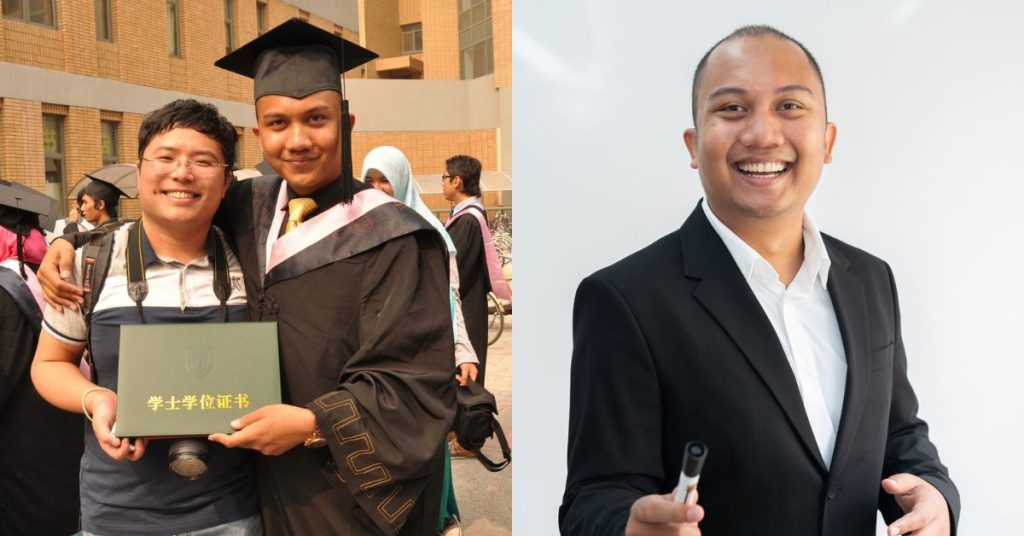
Di luar sekolah, Shah juga mencari kerja sambilan untuk mendapat pengalaman bergaul dengan orang tempatan sambil menambah baikkan kemahirannya berbahas dalam Bahasa Mandarin.
Begitulah cara dia berjaya fasih Bahasa Mandarin bertulis dan bertutur dalam masa enam bulan sahaja.
Membuka peluang pekerjaan yang luas
Semasa berada di luar negara, Shah sering dijemput sebagai penterjemah oleh agensi kerajaan Malaysia untuk pameran-pameran di China.
Acara-acara ini memberi peluang kepada Shah untuk berkenalan dengan wakil-wakil dari pelbagai industri di mana mereka kagum dengan kemahirannya bertutur Bahasa Mandarin.
Kemahirannya ini malah mendapat tawaran pekerjaan daripada syarikat teknologi global seperti Xiaomi dan Google. Menurutnya, syarikat-syarikat tersebut khusus mencari warganegara Malaysia yang fasih Bahasa Melayu dan Mandarin ketika itu.
“Waktu itu telefon pintar mula diperkenalkan di pasaran Malaysia, dan mereka sedang aktif membangunkan ciri-ciri yang membolehkan penterjemahan daripada Mandarin ke Bahasa Melayu,” jelas Shah.

Walaupun Malaysia mempunyai ramai penutur Bahasa Mandarin, Shah berkata kebolehannya bertutur Bahasa Mandarin Tanah Besar membezakannya dari calon-calon lain.
Pengalamannya di syarikat teknologi global membantu Shah mengukuhkan keyakinannya dalam menggunakan bahasa itu dan meyakinkannya bahawa “jaring keselamatan” yang dia miliki adalah luas.
Baginya, pengalaman ini mengesahkan bahawa penguasaan Bahasa Mandarin membawa manfaat kepada semua individu.
“Mandarin adalah kunci kepada pelbagai peluang. Oleh itu, setiap orang harus memiliki kunci ini atau sekurang-kurangnya berusaha untuk memperolehkannya,” katanya.
Pembukaan pusat pembelajaran sendiri
Salah satu syarat menjadi seorang ulama MARA adalah Shah harus berkhidmat dengan ikatan selepas tamat pengajian. Dan Shah pun benar-benar bersemangat tentang peranan itu.
“Namun, apabila saya mula berkhidmat sebagai guru Bahasa Mandarin di institusi pendidikan tempatan, saya menghadapi banyak keterbatasan,” jelasnya. “Kami terikat dengan sukatan pelajaran yang tetap dan kelas-kelas itu hanya untuk persediaan peperiksaan.”
Kecewa, Shah akhirnya memutuskan untuk memulakan pusat bahasa sendiri pada tahun 2018 bawah nama Fasih Mandarin.
Menggunakan wang simpanan sendiri untuk menyewa ruang pejabat, Shah mula membentuk modul dan bahan pembelajaran sendiri untuk bahasa Mandarin.
Pada masa itu, kelas Bahasa Mandarin semakin popular. Disebabkan itu, ia hanya mengambil masa dua hari pengiklanan sebelum semua tempat duduk ditempah. Malah, terdapat senarai menunggu untuk kelas Shah.
“Saya terkejut mendapat maklum balas positif daripada orang ramai di Kuantan, pejabat pertama kami berada,” kongsi Shah. “Bayangkan suatu hari bangun tidur menerima berpuluh-puluh mesej daripada orang yang bertanya tentang kelas!”
Masa pembukaan Fasih Mandarin juga bertepatan dengan pelaburan China di Taman Perindustrian Malaysia-China Kuantan. Kakitangan di taman itu menerima faedah kerjaya seperti gaji yang lebih baik jika mereka fasih bertutur dalam bahasa itu, sesuatu yang Fasih Mandarin dapat membantu sesetengah daripada mereka mencapainya.

Malah, Shah percaya bahawa kebanyakan majikan hari ini lebih menyukai pekerja yang mahir berkomunikasi dalam Basa Mandarin. Mereka juga yang tidak berdepan dengan banyak kesulitan untuk mendapatkan pekerjaan yang baik dan gaji yang lebih tinggi dalam industri yang dikehendaki.
“Sejak saya mula belajar Bahasa Mandarin tanpa asas dan menguasainya hanya dalam tempoh enam bulan, saya boleh berhubung dengan mereka kerana perjuangan saya juga tidak mudah,” katanya.
Memahami kesulitan mereka, Shah mencari cara untuk memendekkan tempoh pembelajaran. Perkara utama adalah memasukkan unsur keseronokan ke dalam semua kaedah dan strategi pengajaran mereka.
Sukatan pelajaran Fasih Mandarin sejajar dengan peperiksaan penguasaan Bahasa Cina yang diiktiraf di peringkat antarabangsa (juga dikenali sebagai HSK). Malah, Fasih Mandarin juga secara rasminya telah mendaftar sebagai Pusat Ujian HSK di Malaysia pada awal tahun ini.
“Tidak kira usia, anda akan tetap berkumpul dan duduk dalam suasana seperti tadika ini, menyanyikan lagu, menjalankan aktiviti dan berinteraksi antara satu sama lain, semuanya dalam Bahasa Mandarin,” kongsinya.
Di Fasih Mandarin, pelajar terdiri daripada kanak-kanak berumur 4 tahun hingga warga emas berumur 70 tahun ke atas, membuktikan bahawa usia tidak seharusnya menjadi penghalang untuk mempelajari bahasa.
Pasukan guru-guru yang bersimpati
Pusat pembelajaran Cina di Malaysia memang tidak luar biasa, tetapi ada satu perkara yang membezakan Fasih Mandarin—pasukan tutor semua Bumiputera.
Shah percaya bahawa ini menjadikan mereka lebih memahami cabaran pelajar. Ini membolehkan pasukan mereka bentuk pendekatan pengajaran yang berkesan.
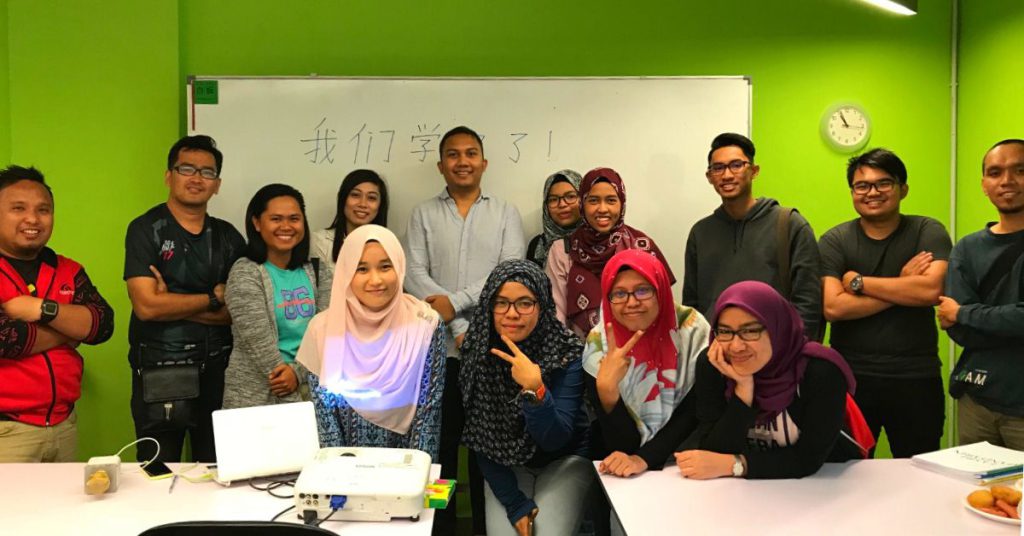
“Pada masa yang sama, jurulatih kami adalah ikon inspirasi kepada pelajar untuk terus maju dan tidak berputus asa dalam perjalanan mereka menguasai Bahasa Mandarin,” sambung Shah.
Walau bagaimanapun, merekrut jurulatih Mandarin yang berkelayakan bukanlah mudah. Untuk mengatasinya, Shah telah memulakan projek biasiswa untuk jurulatih Fasih Mandarin.
Penerima biasiswa akan menerima latihan untuk mencapai tahap penguasaan Bahasa Mandarin tertinggi dan pensijilan antarabangsa untuk mengajarnya sebagai bahasa asing.
Mengenai topik biasiswa, Fasih Mandarin juga telah melancarkan projek Biasiswa FM 2022. Ini akan membantu individu mengikuti kursus Mandarin Permulaan HSK1.
“Projek ini sangat dekat di hati saya kerana biasiswa MARA yang saya terima pada 2009 dan Bahasa Mandarin adalah dua perkara yang mengubah hidup saya menjadi lebih baik,” kongsi Shah.
“Semua orang boleh fasih Mandarin”
Daripada satu pusat di Kuantan kepada lima di seluruh Malaysia, Fasih Mandarin kini telah memindahkan ibu pejabatnya ke Kuala Lumpur. Ia juga sedang mencari untuk membuka lebih banyak cawangan dan hab.
Shah juga mendedahkan bahawa Fasih Mandarin akan melancarkan jenama baharu—FMKiDS Montessori.
“Selain itu, kami telah bekerjasama dengan institusi pendidikan swasta lain untuk menyediakan kurikulum Bahasa Mandarin yang lengkap dan membekalkan jurulatih bahasa Mandarin,” kongsi Shah.
Sebagai contoh, Fasih Mandarin sedang berbincang dengan Universiti Teluk Beibu China untuk menjadi pusat program persediaan pelajar untuk melanjutkan pelajaran di China.
Kini, Shah telahpun mencapai banyak sejak persekolahannya dan penguasaan Bahasa Mandarin juga jauh berbeza dibandingkan zaman dulu. Tetapi seperti yang sering dia katakan, “Semua orang boleh fasih Mandarin”.
- Ketahui lebih lanjut tentang Fasih Mandarin di sini.
- Baca artikel lain kami tentang startup Malaysian di sini.
Also Read: Why M’sians need to join this 2-day event in PJ that’ll boost your understanding of IPs
Kredit Gambar Featured: Fasih Mandarin